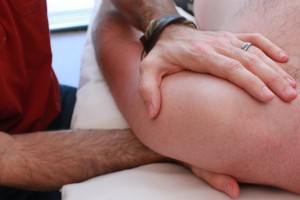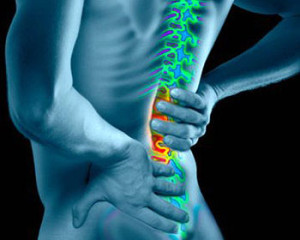Rolfing In Austin: Beyond Rolfing
 Over the past 7 years as a Rolfer – 7 years this month! – I’ve had the immense pleasure of partnering with over 500 unique clients on their quests for greater health, logging thousands of hours of Rolfing sessions along the way. I’ve worked with an amazing variety of human beings: children as young as just a few months old, adults as old as 80, professional athletes and musicians, weekend warriors, cubicle workers, and people that just want to be able to grocery shop without being in pain. It’s been an incredibly rich and enlightening exposure to the diversity of people in Austin and beyond, the challenges we have, and how powerful Rolfing in Austin can be in providing our bodies a new platform for movement, comfort, and health.
And yet, over the years I’ve often been challenged, sometimes frustrated, and even left scratching my head and saying “Huh??” when client outcomes aren’t in sync with the work I’m doing and the change that we both perceive happening as practitioner and client. Those moments have naturally led me to adapt my practice and learn new skills along the way, but recurring questions have been “So, you’ve done the work of Rolfing….now what? And how can you better help clients take what we accomplish during a session out into the real world to integrate it into their daily lives for lasting change?”
Over the past 7 years as a Rolfer – 7 years this month! – I’ve had the immense pleasure of partnering with over 500 unique clients on their quests for greater health, logging thousands of hours of Rolfing sessions along the way. I’ve worked with an amazing variety of human beings: children as young as just a few months old, adults as old as 80, professional athletes and musicians, weekend warriors, cubicle workers, and people that just want to be able to grocery shop without being in pain. It’s been an incredibly rich and enlightening exposure to the diversity of people in Austin and beyond, the challenges we have, and how powerful Rolfing in Austin can be in providing our bodies a new platform for movement, comfort, and health.
And yet, over the years I’ve often been challenged, sometimes frustrated, and even left scratching my head and saying “Huh??” when client outcomes aren’t in sync with the work I’m doing and the change that we both perceive happening as practitioner and client. Those moments have naturally led me to adapt my practice and learn new skills along the way, but recurring questions have been “So, you’ve done the work of Rolfing….now what? And how can you better help clients take what we accomplish during a session out into the real world to integrate it into their daily lives for lasting change?”
Those questions have been the primary guiding principles in my practice these last several years. In the last two years alone my practice has expanded beyond just Rolfing in Austin as I’ve added two significant methodologies to the way I work: mindfulness-based self-study (the Hakomi method), and coordinative and natural movement education. While these additions are somewhat outside of the scope of the classic Rolfing process (which I still do as well), they are both oriented toward function and awareness of the body, and combine beautifully with Rolfing to create a very unique experience of transformation.
So, what does this combination of work – Rolfing, mindfulness, and movement – look like for a client? And how has it changed client outcomes? One recent example stands out as a powerful blend of these three methodologies.
Scott, 39, began seeing me as a client this past summer on a referral from an excellent chiropractor here in Austin that I often share clients with. His primary symptoms were low back pain and a tight jaw and neck, which led to difficulty standing, sleeping, and walking comfortably, and were interfering with his ability to work. He’s also an avid gardener, so he spends a lot of time in a squatting position, moving up and down to and from the ground, and carrying heavy loads. As a teenager he’d had back surgery for a herniated lumbar disc so I knew structural integrity and support was a key issue.
We began our work using a rough sketch of the classic Rolfing protocol, the 10 Series, to see how his body would respond to more traditional hands-on work. Although my initial focus was on balancing his myofascial tissue to reorganize his structure, early on I began giving him specific homework exercises designed to elicit a better connection to his body’s natural support system while beginning to build basic mindfulness skills: focusing on his feet pushing him forward from the ground as he walked, and using his feet and legs to go from sitting to standing rather than pushing out of his seat with his hands and arms. As his body began to change over the first several sessions and our work together began to create better core stability in his body, we upped the ante a bit and began looking at more complicated movement patterns for getting down to the ground and back up again, all the while eliciting the core support we’d already evoked through the hands-on work.
Early on with these relatively simple measures, significant change in Scott’s symptoms occurred. By his 4th session, Scott reported only one day in the previous two weeks of back pain, and by the 6th session he reported increased confidence in his body’s integrity. Just a few sessions later and he was “pretty consistently well”; any pain that did recur tended to be of a lesser nature and he rebounded quickly if he overdid it in the garden. He also described a better understanding of his body and a new ability to understand the difference between normal aches and pains from overexertion and more significant structural pain. Along the way I recommended Pilates to build core strength and continued chiropractic care as needed, both of which added to the overall improvement of Scott’s body.
Given the success of our early work, Scott and I began to devote more focus toward movement-specific skills in our later sessions. Alongside these skills, I introduced the use of a deeper layer of mindfulness to build a better understanding of the nuances of his system, and awareness of habitual patterns that create tension and instability for him.
Armed with a better understanding of how he uses his body day-to-day, I began challenging Scott with balancing skills in order to engage his newly-stable body in multiple dimensions, which would translate well to his real-world activities of moving up and down from the ground with precision in the garden. This was an extraordinarily fun part of our work together, as we continually connected back to the improvements Rolfing had evoked in Scott’s body, used them as a framework for movement integrity, and took them forward into the natural movement exercises of balancing (and recovering from imbalance) while walking forward, backward, turning around, and going into and out of a squatting position. As a client, Scott did a great job of owning this work, continuing to practice the skills we’d developed outside of our sessions, which did a tremendous job of integrating them into his movement system.
Importantly, I introduced Scott to a more-nuanced type of mindfulness during this phase of our work: tracking basic sensation in his body so we could discover where, when challenged with balance, his body wanted to create inefficient tension patterns in order to stabilize prior to moving. As a practitioner, this was very helpful to guide the continued hands-on interventions that were woven in during these sessions and, even more importantly, they illuminated the source of a problem area’s recurring discomfort. Understanding this gave us a great piece of information about how Scott’s body habitually moves, and a very specific movement pattern he could then track for and correct to create more balance and ease in his whole body. Finding awareness of those inefficient efforts, and then working together to reorient his nervous system to the support of his body, the support of the ground, and the space around him (skills we’d also woven through our later sessions to help improve his coordination), created the “next level” of Scott’s body intelligence and ease.
Tracking “positive” sensations during and after sessions (such as feelings of groundedness and circulation), in addition to finding areas of tension, and practicing reconnecting to those sensations regularly, also was a great tool to deepen our work’s integration into Scott’s nervous system. This practice effectively rewrites your system’s software, building new neural pathways to use rather than allowing you to continually fall into the well-trodden paths of old habitual patterns. For Scott, this was a great way to continue to teach his body that support could be easy rather than effortful.
Scott shared this with me about his experience working together:
 “After twenty-four years of chronic back pain I found Mike Williams, Certified Rolfer. I have benefitted from work with chiropractors, massage therapy, acupuncture and yoga but after two, three week bouts of debilitating back pain this year I wanted to start over. Rolfing has given me a chance to rebuild and relearn my body so that I can enjoy doing what I love. Some have asked me if Rolfing is painful. It is not, it is quite relaxing and energetic at the same time. Mike has a very comfortable and secure space for his practice. I am so thankful to a have found Rolfing, it is truly changing my life and body for the better.”
“After twenty-four years of chronic back pain I found Mike Williams, Certified Rolfer. I have benefitted from work with chiropractors, massage therapy, acupuncture and yoga but after two, three week bouts of debilitating back pain this year I wanted to start over. Rolfing has given me a chance to rebuild and relearn my body so that I can enjoy doing what I love. Some have asked me if Rolfing is painful. It is not, it is quite relaxing and energetic at the same time. Mike has a very comfortable and secure space for his practice. I am so thankful to a have found Rolfing, it is truly changing my life and body for the better.”
Start to finish, this was an amazing journey to have as a practitioner. It showed me first-hand the transformative power of client engagement in the practice of rediscovering the body. Rolfing in Austin itself solved a lot of the pain and basic challenges Scott brought in very quickly. And transitioning to a deeper level of reflection, awareness, and mindful movement deepened the process tremendously, creating a platform for Scott’s continued self-discovery and somatic exploration for a long time to come.
While the specific work I did over the last several months with Scott was unique to him, this is a great example of the scope of work and the expertise I bring into my Rolfing practice. If you’re curious about how we might work together, feel free to contact me anytime, I’d love to chat with you! 512-470-8998

